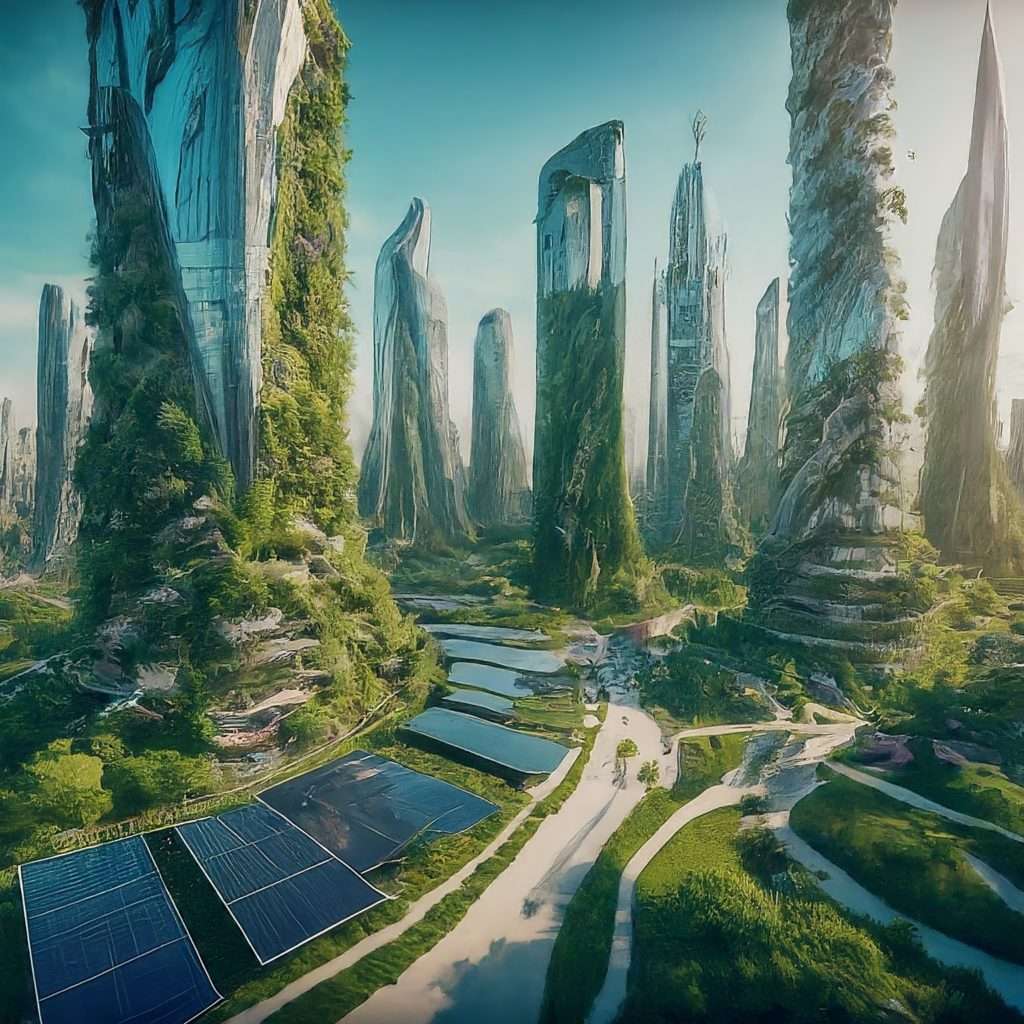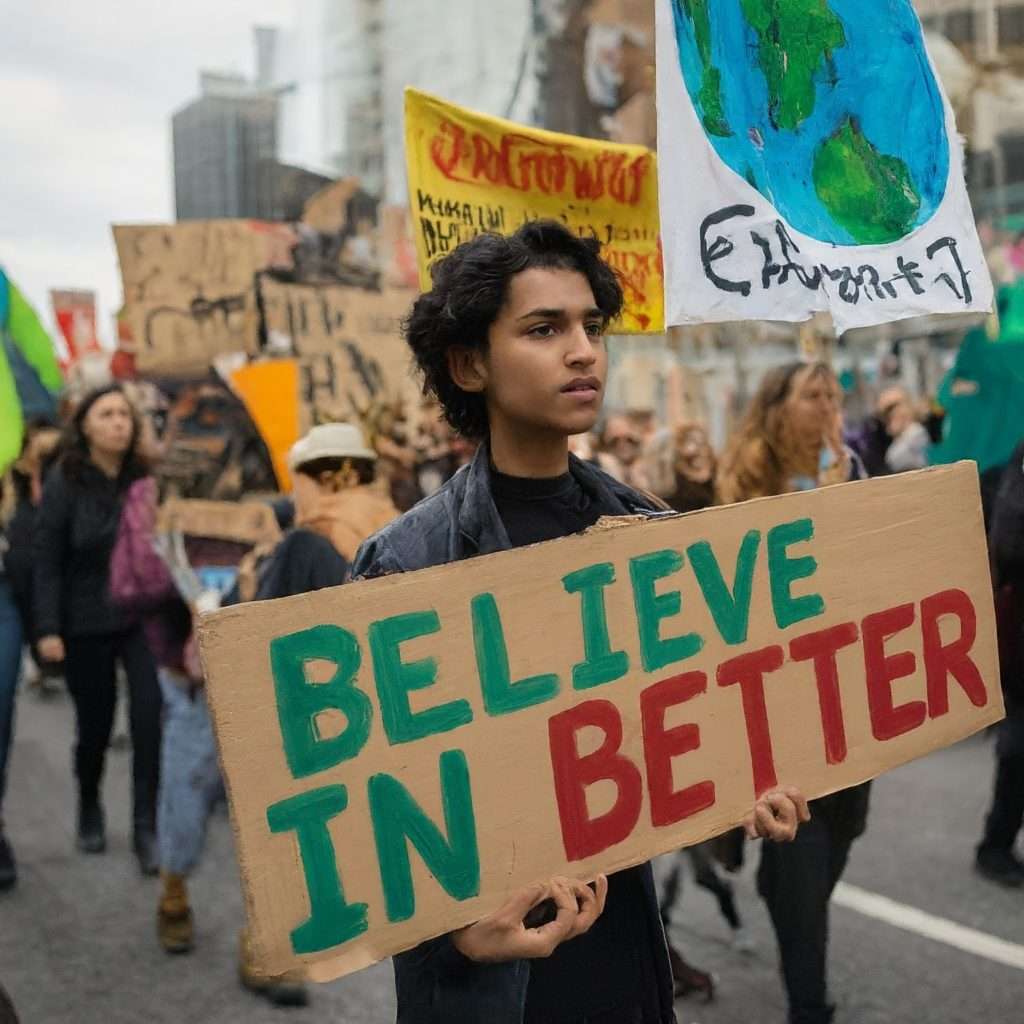Introduction
Imagine a world where the air is clean, the water is pure, and the land is fertile. A world where humans and nature coexist in harmony, and where every living being has a chance to thrive. A world where we use our creativity, innovation, and compassion to solve the most pressing challenges of our time. This is not a fantasy; this is a possibility. This is the world we can create if we believe in better.
We are living in a critical moment in history. Our planet is facing unprecedented threats from climate change, biodiversity loss, pollution, and other environmental issues. These challenges affect every aspect of our lives, from our health and well-being to our economy and security, to our culture and identity. They also pose a serious risk to the future of our children and generations to come.
But we are not powerless. We have the knowledge, the technology, and the resources to overcome these challenges. We have the potential to transform our world for the better. We have the opportunity to reimagine a thriving Earth.
The Current State of Our Planet
The first step to creating a better world is to understand the current state of our planet. Here are some facts and figures that illustrate the magnitude and urgency of the environmental challenges we face:
- According to the Intergovernmental Panel on Climate Change (IPCC), the global average temperature has risen by about 1.1°C since the pre-industrial era, and is likely to reach 1.5°C by 2030 if current trends continue. This increase in temperature has caused more frequent and intense heat waves, droughts, floods, storms, wildfires, and sea level rise, affecting millions of people and ecosystems around the world.
- According to the Intergovernmental Science-Policy Platform on Biodiversity and Ecosystem Services (IPBES), the Earth is losing biodiversity at a rate unprecedented in human history, with about one million species threatened with extinction. This loss of biodiversity has negative impacts on the functioning of ecosystems, the provision of essential services such as food, water, and medicine, and the resilience of nature to cope with change.
- According to the World Health Organization (WHO), more than 90% of the world’s population lives in areas where air quality exceeds WHO guideline limits, resulting in an estimated 7 million deaths each year from exposure to air pollution. Air pollution also contributes to climate change, acid rain, and ozone depletion.
- According to the United Nations Environment Programme (UNEP), about 8 million tonnes of plastic waste end up in the oceans every year, harming marine life and ecosystems, and potentially entering the human food chain. Plastic pollution also affects the quality and availability of freshwater, as well as the aesthetic and recreational value of natural landscapes.
These are just some of the examples of the environmental challenges we face. They are complex, interconnected, and global in scale. They require urgent and coordinated action from all stakeholders, including governments, businesses, civil society, and individuals. They also require a shift in our mindset, from a short-term and self-centered perspective, to a long-term and holistic one. We need to stop seeing nature as something separate from us, something to be exploited and degraded, and start seeing it as something we are part of, something to be respected and restored. We need to believe in better.
Reimagining a Thriving Earth
Believing in better means reimagining a thriving Earth. It means envisioning a future where we live in harmony with nature, where we use our resources wisely and sustainably, where we foster innovation and collaboration, and where we celebrate diversity and inclusion. It means creating a future where we are not only surviving but thriving.

Reimagining a thriving Earth is not a utopian dream, it is a realistic goal. There are many examples of innovative solutions and sustainability practices that are already making a positive difference in the world. Here are some of them:
- Renewable energy: Renewable energy sources such as solar, wind, hydro, and biomass can provide clean, reliable, and affordable power for our homes, businesses, and industries, while reducing greenhouse gas emissions and air pollution. According to the International Renewable Energy Agency (IRENA), renewable energy accounted for about 26% of the global electricity generation in 2018 and could reach 86% by 2050.
- Sustainable agriculture: Sustainable agriculture practices such as organic farming, agroforestry, permaculture, and urban gardening can enhance soil health, biodiversity, food security, and livelihoods, while reducing water use, chemical inputs, and waste. According to the Food and Agriculture Organization (FAO), sustainable agriculture can increase crop yields by up to 79%, while improving environmental and social outcomes.
- Circular economy: Circular economy principles such as reduce, reuse, recycle, and repair can minimize the use of natural resources, extend the life of products, and prevent waste and pollution. According to the Ellen MacArthur Foundation, a circular economy could generate $4.5 trillion of additional economic output by 2030, while reducing greenhouse gas emissions, material consumption, and environmental impacts.
These are just some of the examples of reimagining a thriving Earth. There are many more, from green buildings and transport to eco-tourism and education, to conservation and restoration. There are also many inspiring initiatives and success stories from around the world, such as:
- The Great Green Wall: The Great Green Wall is an African-led movement to grow an 8,000 km long and 15 km wide mosaic of trees, grasslands, and plants across the Sahel region, from Senegal to Djibouti. The project aims to restore degraded land, enhance biodiversity, combat desertification, and improve food security and livelihoods for millions of people.
- The Ocean Cleanup: The Ocean Cleanup is a non-profit organization that develops and deploys advanced technologies to remove plastic from the oceans. The project uses a passive system of floating barriers that catch and concentrate plastic debris, which is then collected and recycled. The project aims to clean up 90% of the ocean plastic by 2040.
- The Eden Project: The Eden Project is a popular visitor attraction and educational charity in Cornwall, UK, that showcases the diversity and interdependence of life on Earth. The project features two massive biomes that house thousands of plant species from different climates and regions, as well as outdoor gardens, sculptures, and exhibitions. The project aims to connect people with nature, inspire curiosity and creativity, and promote sustainability and social justice.
These are just some of the examples of inspiring initiatives and success stories from around the world. There are many more, from local to global, from grassroots to institutional, from individual to collective. They show us that reimagining a thriving Earth is not only possible but happening.
Belief in Action
Reimagining a thriving Earth is not enough, we need to act on it. We need to turn our belief into action. We need to take responsibility for our choices and actions, and their consequences for the planet and its inhabitants. We need to be the change we want to see in the world.

Belief in action means taking concrete steps to reduce our environmental footprint, to support sustainable development, and to advocate for environmental justice. It means being informed, engaged, and empowered. It means being part of the solution, not the problem.
There are many ways we can take action to create a thriving Earth. Here are some practical tips and resources for you to get involved:
- Reduce your energy consumption and switch to renewable sources. You can save energy by using energy-efficient appliances and lighting, adjusting your thermostat, and unplugging devices when not in use. You can also switch to renewable energy sources such as solar panels, wind turbines, or green power plans. You can find more tips and resources on Energy Saver and Renewable Energy World.
- Reduce your water consumption and protect water quality. You can save water by taking shorter showers, fixing leaks, and installing low-flow fixtures. You can also protect water quality by avoiding the use of harmful chemicals, disposing of waste properly, and planting native vegetation. You can find more tips and resources on Water Use It Wisely and Water.org.
- Reduce your waste production and adopt a circular lifestyle. You can reduce waste by following the 5 Rs: refuse, reduce, reuse, recycle, and rot. You can also adopt a circular lifestyle by buying less, buying better, and sharing more. You can find more tips and resources on Zero Waste Home and The Story of Stuff.
- Eat more plant-based and organic food and support local farmers. You can eat more plant-based and organic food by choosing fruits, vegetables, grains, nuts, and seeds over animal products, and by avoiding processed and packaged food. You can also support local farmers by buying from farmers’ markets, community-supported agriculture, and fair-trade cooperatives. You can find more tips and resources on Forks Over Knives and Food Tank.
- Travel more sustainably and responsibly. You can travel more sustainably and responsibly by choosing low-carbon modes of transport such as walking, biking, public transit, or electric vehicles, and by offsetting your carbon footprint when flying. You can also travel more responsibly by respecting the culture, nature, and people of the places you visit, and by supporting local communities and businesses. You can find more tips and resources on Sustainable Travel International and Responsible Travel.
- Learn more about the environment and sustainability. You can learn more about the environment and sustainability by reading books, articles, blogs, and podcasts, by watching documentaries, films, and videos, and by attending events, webinars, and courses. You can also learn from experts and thought leaders in sustainability, such as David Attenborough, Greta Thunberg, and Vandana Shiva.
- Join or start a community or movement for environmental action. You can join or start a community or movement for environmental action by connecting with like-minded people, organizations, and networks, by participating in campaigns, petitions, and protests, and by volunteering, donating, or fundraising for environmental causes. You can find more tips and resources on 350.org, Greenpeace, and WWF.
These are just some of the ways you can take action to create a thriving Earth. There are many more, depending on your interests, skills, and passions. The important thing is to start somewhere, and to keep going. Every action count, no matter how big or small. Every action makes a difference, no matter how visible or invisible. Every action matter, no matter how easy or hard.
Conclusion
We live in a world of challenges, but also a world of opportunities. We live in a world of problems, but also a world of solutions. We live in a world of despair, but also a world of hope. We have the power to choose which world we want to live in, and which world we want to leave behind.
We can choose to believe in better. We can choose to reimagine a thriving Earth. We can choose to act on our belief. We can choose to be the change.
As Mahatma Gandhi said, “Be the change that you wish to see in the world.” Let us all believe in better and be the change we wish to see. Let us all reimagine a thriving Earth and make it a reality. Let us all create a better world, for ourselves, for each other, and for generations to come.
